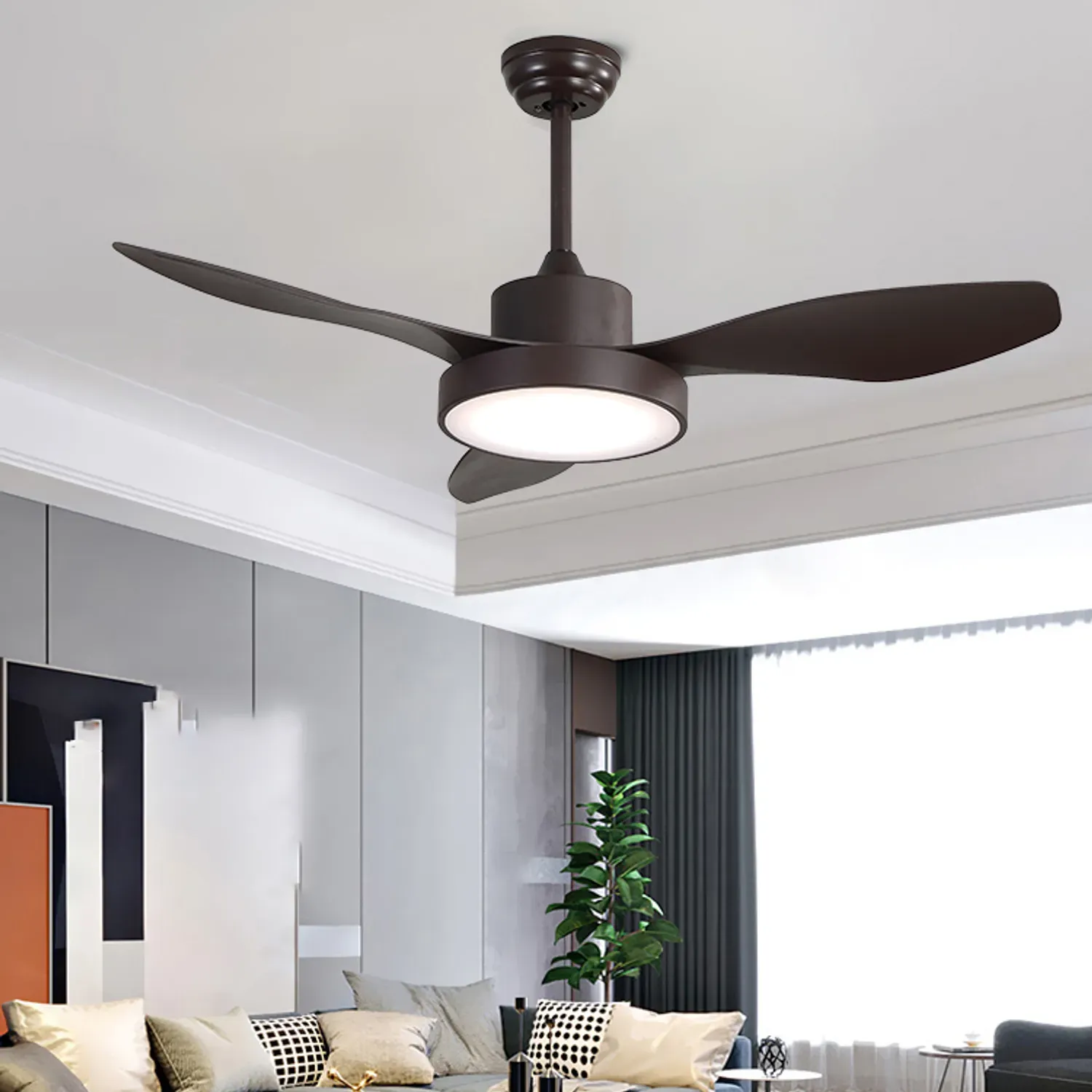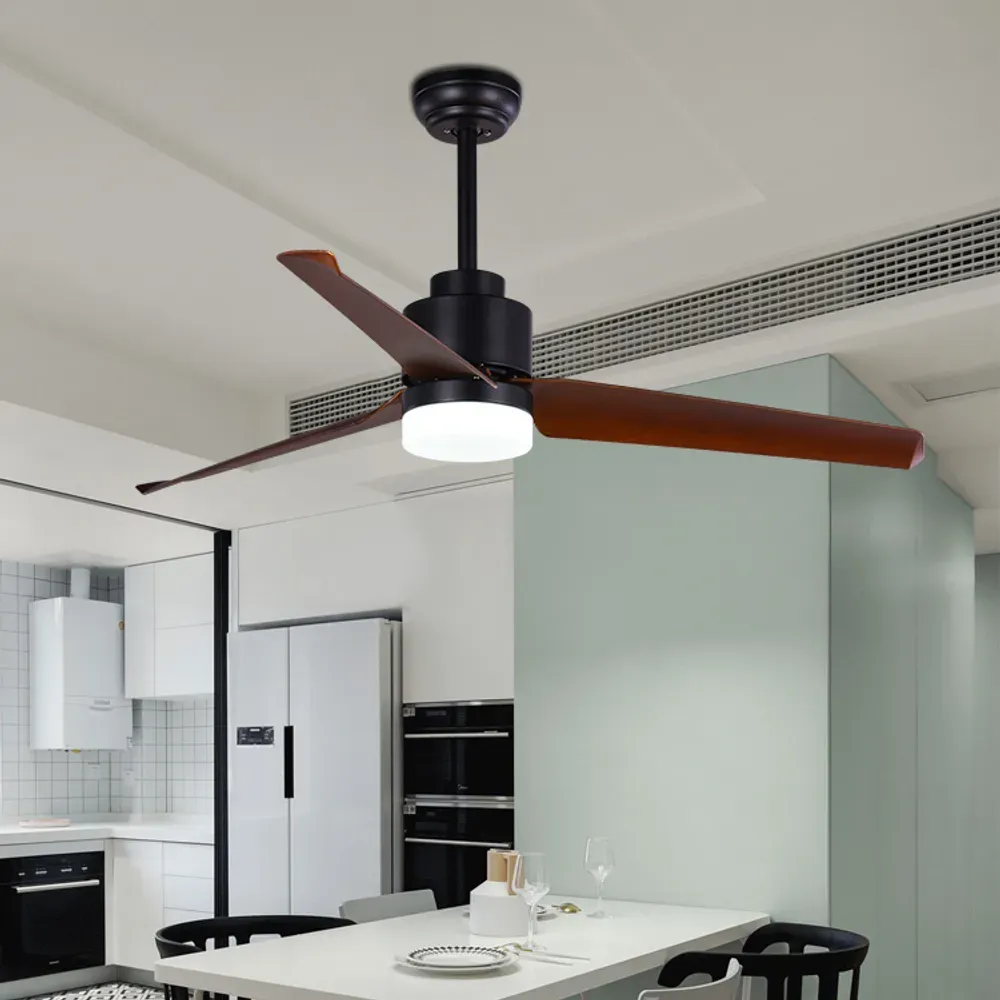
Get A Quote
Choosing the Right Ceiling Fan Size: A Simple Guide
Choosing the perfect ceiling fan for your space, whether it's a snug bedroom retreat or a busy kitchen hub, can seem daunting given the abundance of options. With a wide array of styles, sizes, and colors to sift through, finding the ideal match can feel like a challenging task. In this blog post, we endeavor to streamline this process by offering an in-depth guide to selecting the right size ceiling fan for your specific space.
Why Does Ceiling Fan Size Matter?
Recognizing the importance of ceiling fan size is crucial as it directly influences efficiency, performance, and the overall atmosphere of the room. Incorrect sizing can result in inefficient airflow circulation, diminishing the fan's effectiveness.
On the other hand, oversized fans can overpower the room's aesthetics, disrupting its balance. Therefore, choosing the right size ceiling fan is vital to ensure optimal performance and visual harmony in the space.
Choosing the Correct Ceiling Fan Size
Determining the right ceiling fan size for your room is essential for optimizing comfort and airflow. Here's a simple guide to help you get started:
For rooms measuring between 29" to 36":
- Suitable for bathrooms, breakfast nooks, and utility rooms
- Ideal for spaces up to 75 sq. ft
For rooms measuring between 42" to 48":
- Recommended for bedrooms, kitchens, and dining rooms
- Suitable for spaces up to 175 sq. ft
For rooms measuring between 52" to 56":
- Ideal for large bedrooms, family rooms, and media rooms
- Suitable for spaces up to 350 sq. ft
For rooms measuring 60" or larger:
- Perfect for great rooms and other large spaces
- Recommended for areas exceeding 350 sq. ft
Keep in mind that these are general guidelines, and the specific layout and usage of your room may require a different fan size.
When selecting the perfect ceiling fan for your space, it's crucial to consider factors beyond just room size. Ceiling height plays a pivotal role, as the optimal positioning of blades at least 7 feet from the floor ensures efficient airflow circulation. For rooms with higher ceilings exceeding 8 feet, incorporating a downrod can assist in achieving the desired airflow balance. Conversely, rooms boasting ceilings 9 feet or taller may necessitate a larger blade span to effectively disperse air throughout the space.
Additionally, the shape of the room should not be overlooked. Long, narrow spaces may benefit from the installation of two smaller fans instead of one large fan to promote better air circulation and coverage. Similarly, rooms with unconventional layouts or partitioned areas may require multiple fans to ensure adequate airflow distribution.
Style considerations also come into play when selecting a ceiling fan. The size of the fan can significantly impact the aesthetic appeal of the room, with larger fans making a bold design statement and smaller ones blending in more subtly. Moreover, fan size can influence noise levels, with larger fans generally operating quieter than their smaller counterparts.
Lastly, the size of the fan's motor is a crucial factor to consider. A larger, more powerful motor has the capability to move a greater volume of air, making it suitable for effectively cooling larger rooms. Therefore, when choosing a ceiling fan, it's essential to ensure that the motor size aligns with the dimensions of the room to optimize airflow and enhance cooling efficiency.
Common Myths About Ceiling Fan Sizing
In the realm of ceiling fan selection, misinformation often abounds. Let's debunk some of the most prevalent myths surrounding fan sizing to help you make the right choice for your space:
Bigger is Always Better: While it may seem intuitive to opt for the largest ceiling fan available for maximum airflow, oversized fans can overpower smaller rooms and disrupt the visual balance. Choosing a fan that is too large for the room can lead to discomfort and inefficiency.
One Size Fits All: Many people mistakenly believe that a single standard-sized ceiling fan can adequately cool any room. However, different room sizes and layouts require appropriately sized fans to ensure optimal airflow and comfort.
Blade Count Determines Efficiency: Contrary to popular belief, the number of blades on a ceiling fan does not necessarily correlate with its efficiency. While more blades may create a different aesthetic or airflow pattern, factors such as blade pitch, motor efficiency, and overall design play a more significant role in performance.
Room Size is the Sole Determinant: While room size is an essential factor in ceiling fan sizing, other considerations such as ceiling height, layout, and usage patterns also influence the selection process. Ignoring these factors can result in ineffective cooling and wasted energy.
Ceiling Fan Size and Room Size Are Directly Proportional: While larger rooms typically require larger fans for adequate airflow, other factors such as ceiling height and layout can influence the optimal fan size. It's essential to consider all relevant factors to choose the right-sized fan for your space.
By understanding and addressing these common misconceptions, you can make more informed decisions when selecting the appropriate ceiling fan size for your needs.
The End
In summary, choosing the right ceiling fan size requires considering various factors such as room dimensions, ceiling height, layout, and personal preferences. By understanding these factors and dispelling common misconceptions about ceiling fan size, you can make informed decisions to ensure optimal airflow, comfort, and aesthetics in your space. It is advisable to consult reliable size guides and seek expert assistance when needed to find the perfect ceiling fan size.
If you have any questions about ceiling fan size, please feel free to contact us, and our professional team will be happy to assist you in selecting the most suitable product.

